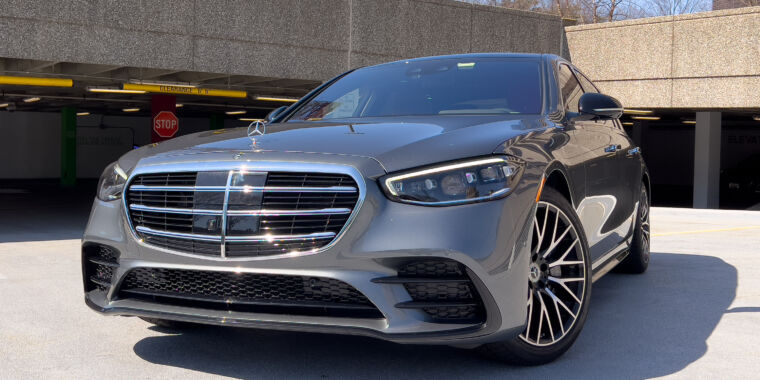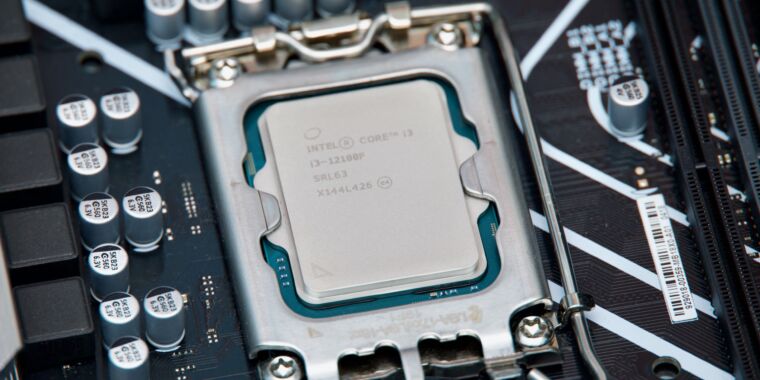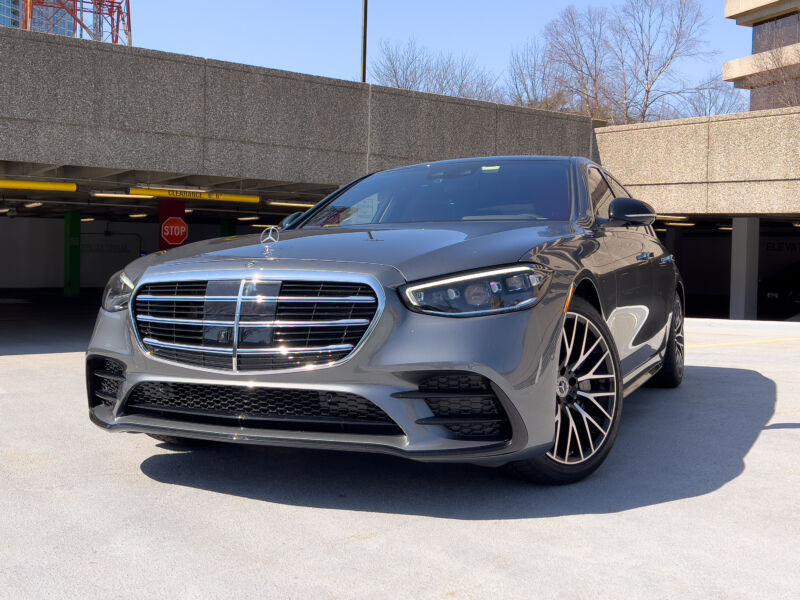
Jonathan Gitlin
When it comes to building luxury cars, few do it better than Mercedes-Benz. The carmaker has come a long way since Carl Benz’s 1886 patent and has put out a string of sedans fit for kings, kingpins, more than few dictators, and the occasional rock star. The current S-Class is the seventh sedan to bear the nameplate, and each vehicle has been more advanced and luxurious than the model that it replaced.
The W223 (as Benzophiles will know this generation) may be the flashiest S-Class to date, with big displays and a rainbow of colors on tap from the interior lighting. Yet its MBUX infotainment system allows you to control just about every function of the car without ever touching a screen, proving that sometimes technology is the answer to driver distraction. And an aero-efficient shape means the W223 is quiet and efficient, with an effective mild-hybrid system.
Mercedes isn’t saying whether the W223 will be the last generation of S-Class to come with an internal combustion engine—for now, the all-electric EQS is a separate model—although the new model very well might be. We tested the $111,100 S500 4Matic: in this case, 500 refers to the capacity of each cylinder, which means you’ll find a turbocharged 3.0 L inline six-cylinder engine under the hood.
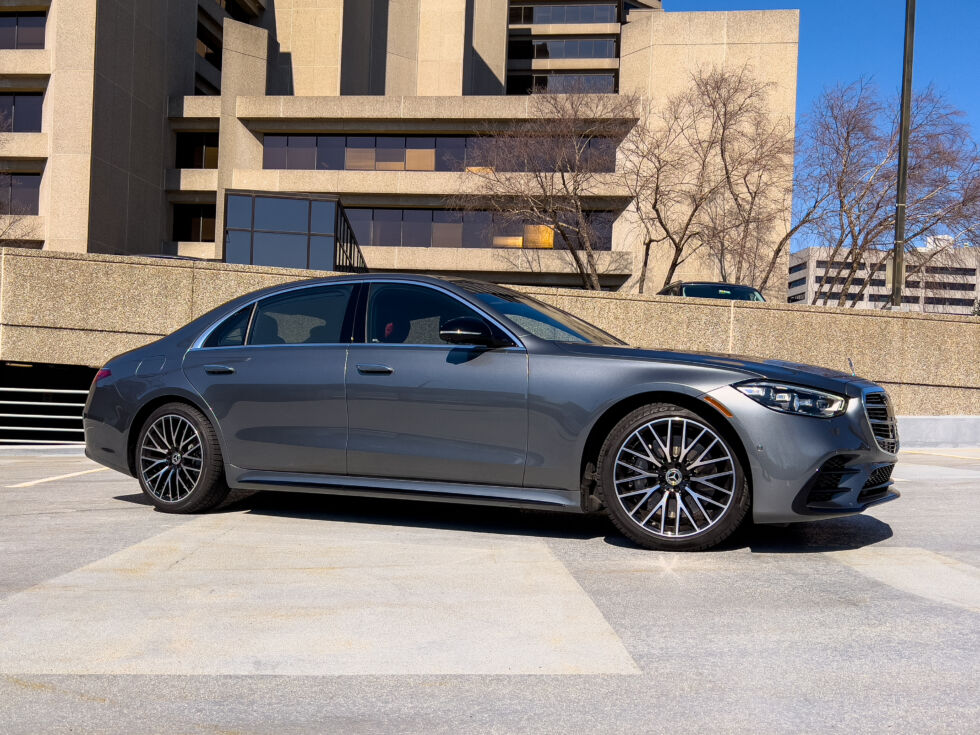
Jonathan Gitlin
The S-Class generates 429 hp (320 kW) and 384 lb-ft (520 Nm), and its integrated 48 V starter-generator adds another 21 hp (16 kW). More importantly, the generator produces 184 lb-ft (250 Nm). Both motor and engine are upstream of the nine-speed automatic transmission that powers all four wheels (the 4Matic bit).
The combination of air suspension and optional active body control makes the S-Class effortless to drive. The car glides along the road, countering pitch and lift as well as roll, and its body stays level even if the road underneath turns washboard. The optional rear-wheel steering is noticeable when you’re trying to park in a tight space and the rear wheels turn in the opposite direction to the front wheels (up to 4.5 degrees). The steering is also noticeable in more stable highway-speed lane changes, when the direction is the same.
You notice the effect of the mild-hybrid system in day-to-day driving as the car pulls away from a standstill. The electric motor fills in with plenty of torque as the straight-six fires up and its compressor spins to life. The mild-hybrid system is coupled to a 0.9 kWh battery, so in Eco and Normal drive modes, the S500 will shut down the internal combustion engine more often than you might expect.
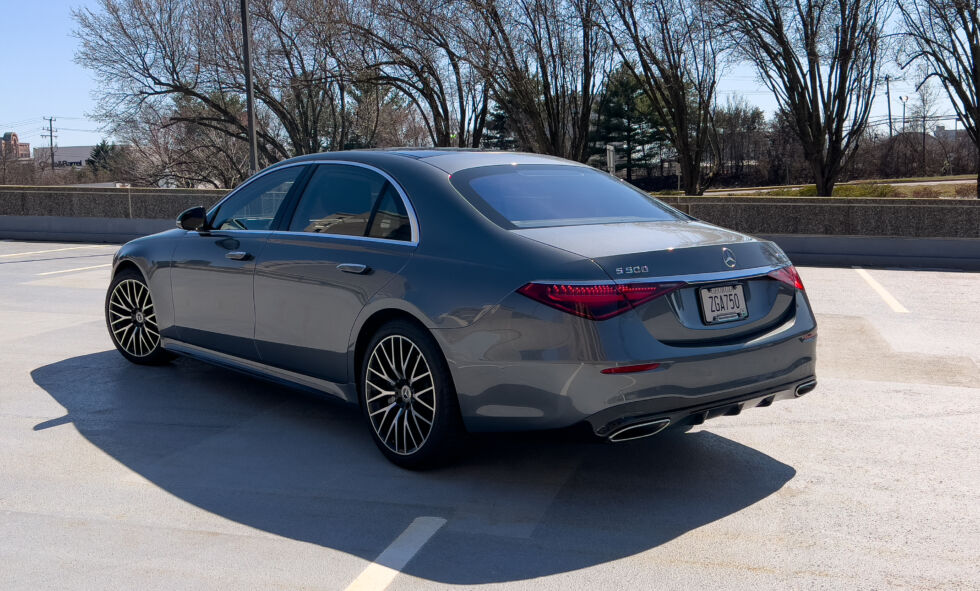
Jonathan Gitlin
Switching to electric is no bad thing. Even though the S-Class has a silky-sounding engine, the aim of the game here is refinement, not exhaust-note appreciation. The S500’s shape plays a role, too, with aerodynamics that would embarrass plenty of electric cars. Not only do its door handles retract flush with the body, but even the optional 21-inch AMG multispoke alloy wheels have quite closed faces to aid airflow.
Mercedes’ design team managed to create a shape with a drag coefficient (Cd) of just 0.22. The reduction in Cd compared to the previous-generation S-Class was large enough that it makes up for an increase in frontal area. The CdA is now 0.56 m2 versus 0.58 m2 for the old model.
Consequently, the S500 is a very quiet car on the move, even when shod in winter tires. It’s also remarkably efficient for a vehicle that weighs 4,740 lbs (2,150 kg): I averaged 28 mpg (8.4 L/100 km) during our time with the S500, bettering the EPA combined average of 24 mpg (9.8 L/100 km).
Perhaps I was bewitched by its dark red suede and leather, but the interior of this W223 S-Class feels more avant-garde than the somber expanse of black leather I normally associate with the breed. Different people may feel differently.
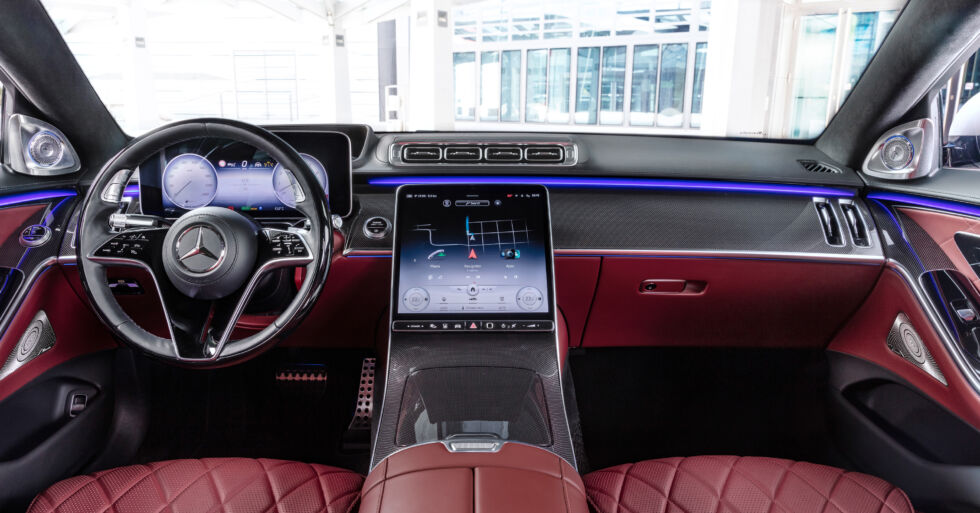
Mercedes-Benz
Let’s talk about the soft suede pillows attached to the headrests. At first, they seemed like overkill; within an hour, I wasn’t sure I ever wanted to drive a car without them. Other drivers might be smitten with the interior lighting; its customizable LEDs could be an inch on the wrong side of “just because you can doesn’t mean you should.”
You’re not limited to just playing with the mood lighting. Mercedes included a plethora of styles for the 12.3-inch main instrument display, although most are variations on “two dials with a map or some information in-between.” Since our test car was optioned with an augmented reality head-up display, it was actually fitted with a 3D driver display that uses a pair of eye-tracking cameras to calculate the right stereoscopic effect for the map that appears between the dials.
The 12.8-inch OLED infotainment screen now seems small in comparison to the enormous 17.7-inch “hyperscreen” that the company used in its electric EQS. But it’s still an impressive screen to find in a car. The MBUX interface is restrained and intuitive, but the easiest way of doing anything is by just telling the car what you want—the voice assistant is activated by saying, “Hey, Mercedes.” Thanks to microphones dotted around the cabin. the voice assistant will even obey rear-seat passengers.
The onboard AI is at least as good as the one I interacted with in BMW’s iX (both companies use Cerence’s natural language tech). I didn’t need to dig through the thick manual when I wanted to figure something out or even poke at a screen with a finger—I just gave the AI instructions. You can interrupt the AI, and it will understand a string of instructions, like “turn on the driver’s seat massage, and then set <insert address here> as the destination.”

